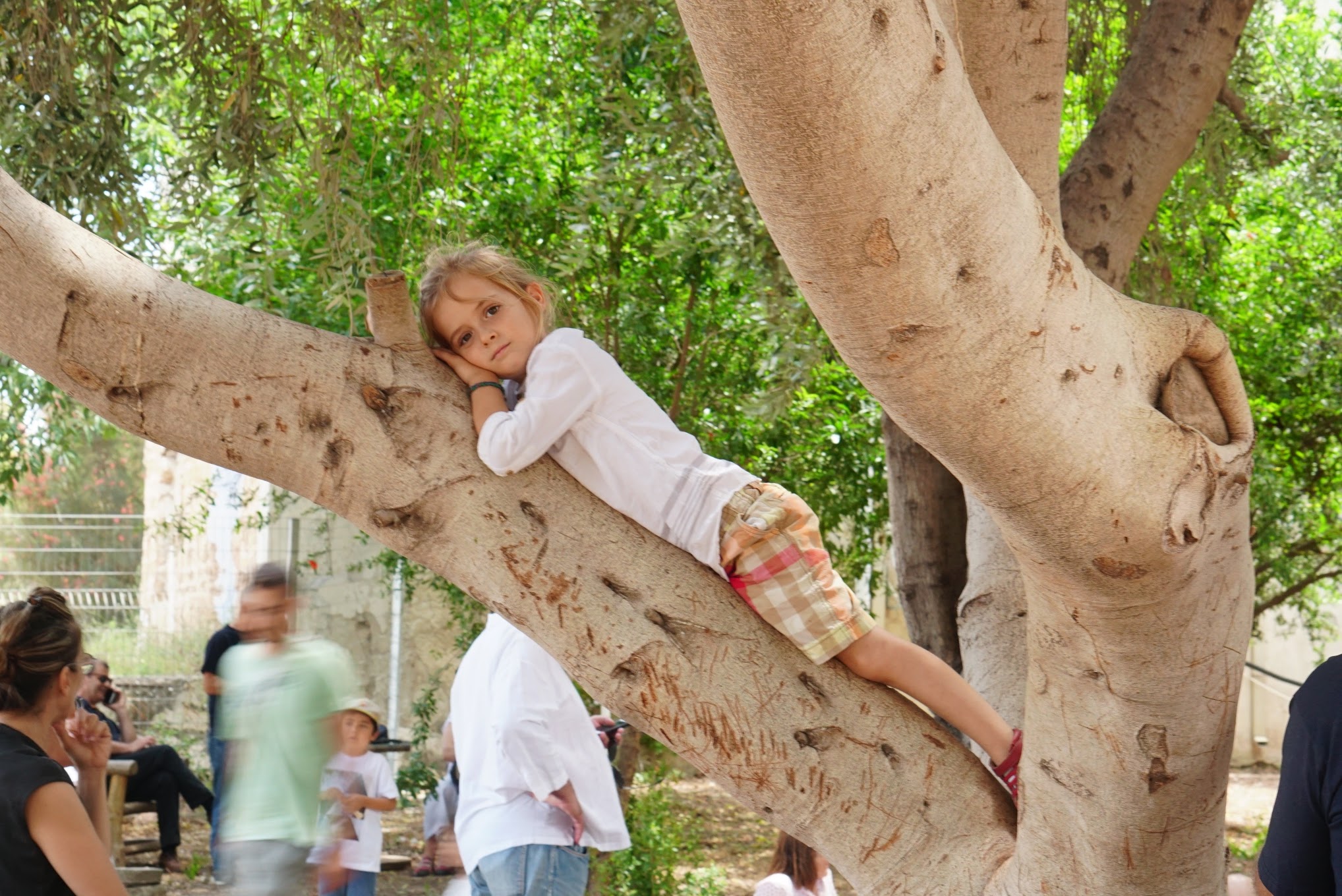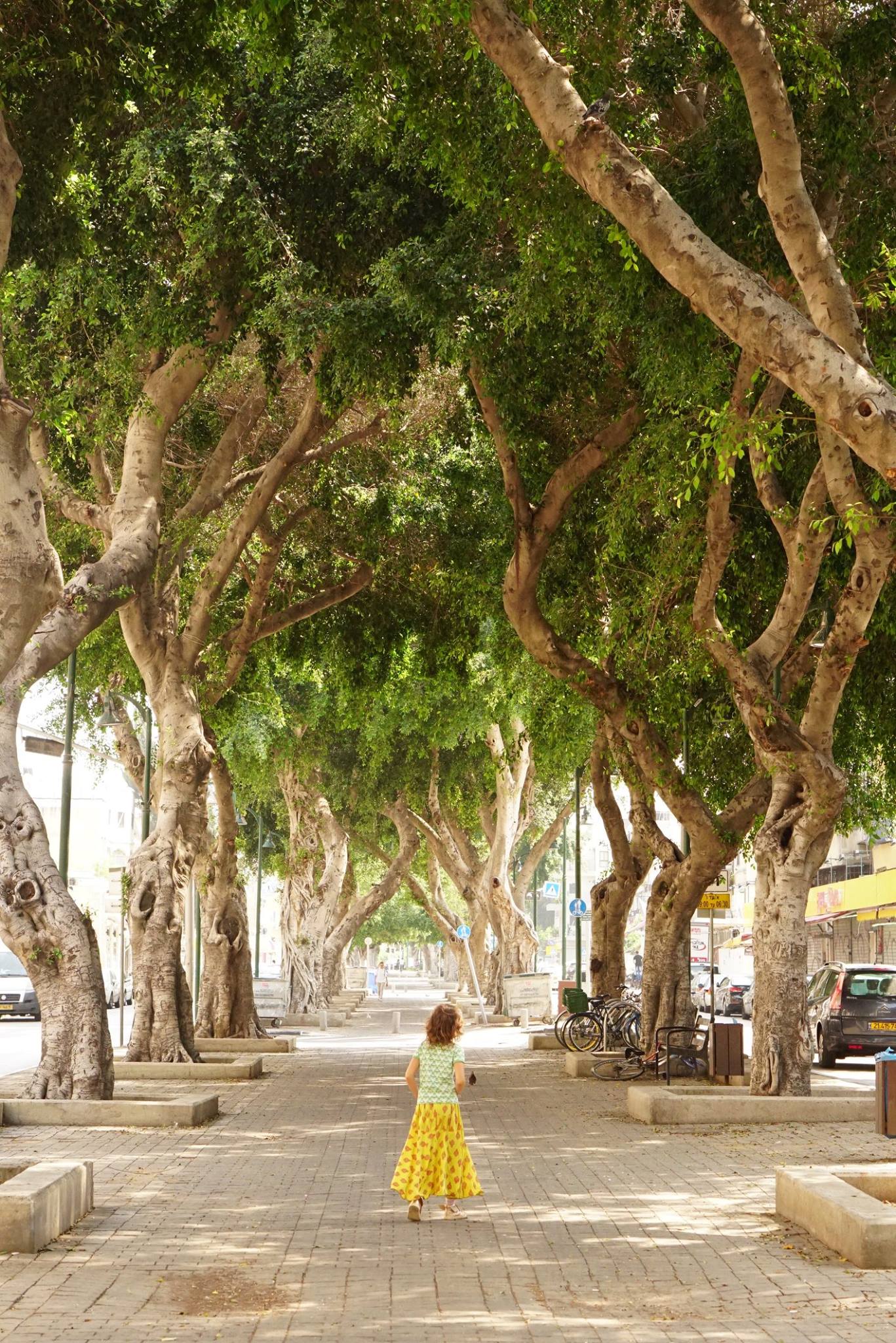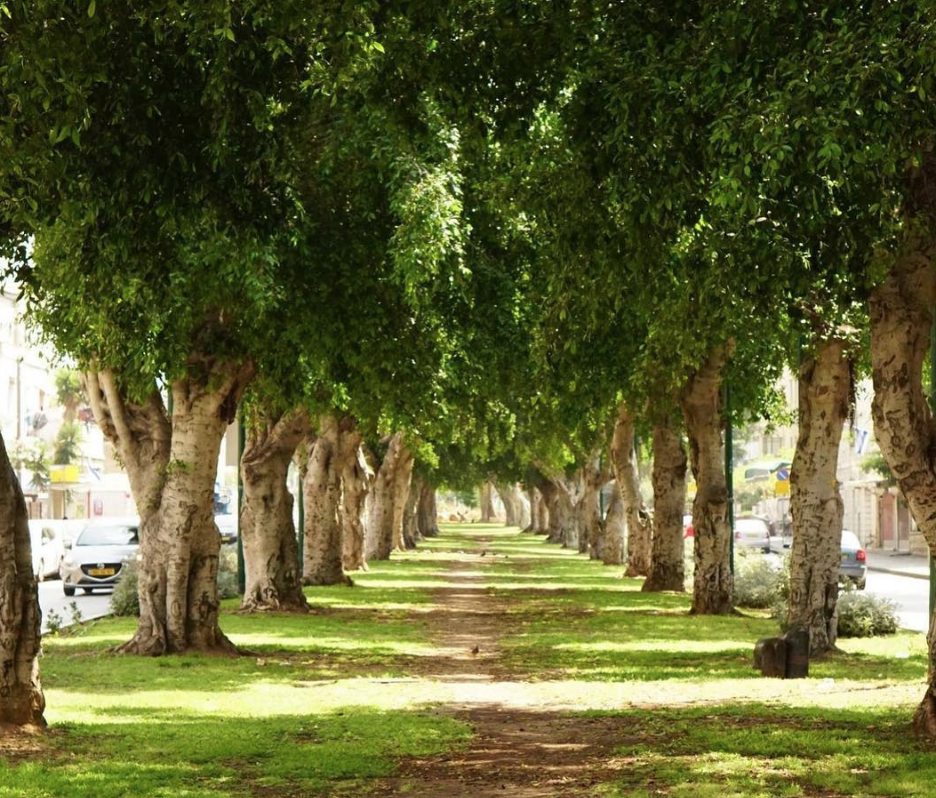Tel Aviv is a relatively new city, but its older sister city next door, to which it shares the same municipality is home to dozens of hundreds of ancient trees, some which the city of Tel Aviv is hellbent on cutting down.
Since 2002, the city has proposed a light rail train to traverse the sister cities of Tel Aviv and Jaffa and to connect them to the suburbs. It’s a great idea, but there is a slight problem. How will passengers get on and off the train with the old trees in the way?
Why cut them down of course!

The trees in question grow on the main artery road Jerusalem Boulevard in Jaffa. There are at least 29 trees from 70 to 102 years old, all historical, and selected to be cut down to make space for train train stations. The city has already starting marking the trees destined for removal, arguing that they are sick anyway, says Vered Navon, activist and photographer working on a book about the trees. She helped found a group called Save the Trees, of which there are 500 members. And they are fighting to save the trees.

A boy on a fig tree in Mikve Israel
A meeting next Tuesday night in Jaffa is set up to inform the public about what the city plans to do. Professors and activists will explain the situation and propose alternatives.
Says Navon, “They in the city, they don’t think about the trees. They only consider the electricity and water it will take to maintain them. They don’t understand that they give us shelter, shade, clean air. It’s Jaffa’s green lung.”
The trees slated for removal are 102-year old spindly Washington palms and 70-year old sprawling fig trees with arms hugging in every direction. The figs were planted when Israel became a state 70 years ago. The figs give enormous amounts of shade and are home to birds and bats that eat berries and bugs. The vision is to turn the boulevard, or at least part of it, into a pedestrian only area, with the train connecting people to shops, cafes and their homes.
Instead of the dozens of buses that run down the street every few minutes, a smooth and easy electric train will traverse the city in speed and style. Activists say that the trees don’t need to be cut down. That one of the city planners that is on the side of the trees says that the stations can be moved 20 meters and the trees can be spared. But the city isn’t listening.

The activists propose that the company the city hired, Netta, can carry out the engineering work and simply move the three stations along the boulevard to spots where the doors of the trains can open with ease.
The palm trees are a common variety, the Washington palm. But they are uncommonly tall, and have some history: “The ancient palms were planted by the students of Elihau Krause, the founder of Mikve Israel,” says Vered, citing Israel’s first agriculture college located in Holon. Funded by the Rothschilds and other prominent figures, it is this school that in the 1800s already was growing cultivars tolerant to desert climates. It is this school and its researchers that gave Israel the ability and spirit to transform the country into an agriculture dynasty.

Fig trees on Jerusalem Boulevard
Jaffa resident Yisrael Borochov who lives on Dr. Paul Erlich Street, one of the proposed train stops said that the city has a history of doing what it wants, without regard for the environment or what’s right for the future. He tells Green Prophet: “They cut down two Washington palm trees on Erlich without asking anyone, and when I turned to Nitza Smoke, in charge of preserving the environment for the city, she didn’t even reply. The trees were about 120 years old. From that moment I lost faith in the establishment because I understood they do whatever they want to do, whenever they want to do, and it’s going to happen today with the train.
“There are not too many ancient trees in Jaffa or Tel Aviv. The city of Tel Aviv should be proud of every single tree and not looking for a reason to cut them down.”
Navon says that the same trees, the fig trees, were not cut down on the wealthier established part of Tel Aviv along Rothschild Boulevard. She insinuates that the reason the city is marking the so-called “sick trees” is because the weaker demographic of Jaffa won’t resist what the city wants to do.
We wrote the city for feedback and will post in the comments or update the article when we get their reply.
Meanwhile, want to fight for the trees? Join the Tuesday evening event in Jaffa. Details here.

